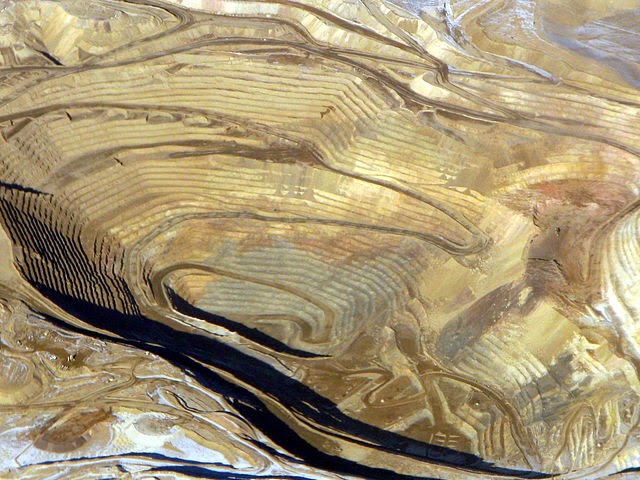
Humans have left many kinds of mark on the planet, but some of the most remarkable and enduring are in the subterranean ‘underworld’ of rocks, hidden deep below our feet.
It’s a world that’s usually out of sight and out of mind — but it’s one where humans have created true geological novelties that have been studied extensively by Dr Jan Zalasiewicz and Professor Mark Williams of the University of Leicester, together with Dr Colin Waters of the British Geological Survey in a new paper published in the academic journal Anthropocene.
Among these observable novelties are the effects of human drilling on the geological ‘underworld’ that exists underfoot.
Dr Zalasiewicz explained: “Human drilling into the Earth’s crust to extract minerals or store wastes may be regarded as ‘anthroturbation’, comparable to the burrows made by worms and other animals but on a vastly greater scale.
“Anthroturbation has created textures and structures underground that are unique within the animal world. No other organism has made igneous and metamorphic rocks — and yet we have made many tons of these in underground nuclear tests, in shock-fracturing and by melting the rock around the blast.”
Anthroturbation commonly extends to several kilometres depth, as compared to the few centimetres or metres that non-human organisms achieve.
Examining the effects of human drilling shows how humans have left their mark on Earth both above the surface and deep below in the subterranean network of human-made tunnels in ways that will have a long-standing impact in the future.
Professor Williams added: “Many of these underground transformations, being beyond the reach of surface erosion, will effectively last forever. They can be preserved for millions and even billions of years into the future, and thus may form our most enduring — and most puzzling — legacy, for any intelligent creatures that may inherit the Earth from us.”
Journal Reference:
Jan Zalasiewicz, Colin N. Waters, Mark Williams. Human bioturbation, and the subterranean landscape of the Anthropocene. Anthropocene, 2014; DOI: 10.1016/j.ancene.2014.07.002
Note : The above story is based on materials provided by University of Leicester.










